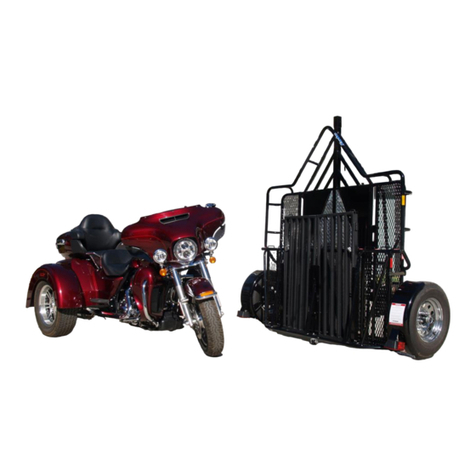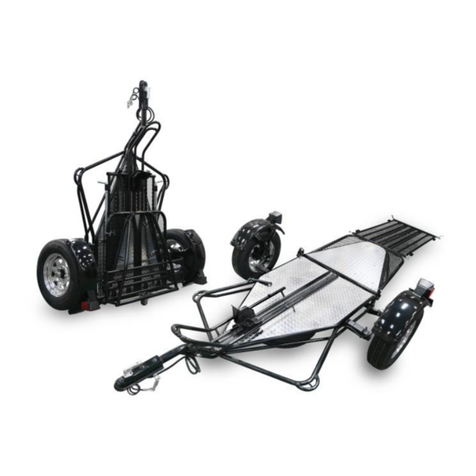- 8 -
4. Knock apart the wood sides of the crate to allow for fender and wheel
installation (where applicable. If steel crate skip to next step).
5. Tilt the trailer backwards slightly so that the tires can slip onto the hubs
(If applicable, the left over wooden crate sides can be used to keep the
trailer tilted while wheels are attached).
6. Attach the wheels/tires to the hubs and hand-tighten lug nuts to hold
wheels on the hubs.
7. Tilt the Trailer forward so that Trailer weight is on the wheels.
8. Roll Trailer out of crate and stand up onto the “casters.”
9. Follow the wheel installation instructions to securely tighten the wheels.
Wheel Installation:
1. Remove wheels from hub and place center wheel caps onto hub (if
equipped, otherwise skip to next step).
2. Carefully install wheel onto hub and tighten lug nuts with torque wrench
to 60 foot pounds of torque. Be sure to use the “star” pattern to securely
tighten the wheels.
3. Make certain that both hubs and hubcaps are tight and wheels rotate
freely.
4. RE-TIGHTEN lug nuts after the first 50 miles.
Note: Trailer wheels may have to be balanced before first use. Please
visit your local wheel/tire shop to make sure both wheels and any spare
tires are balanced prior to use.
Tail Light Installation:
Note: If your trailer is equipped with tail lights or LED lights which are pre-
installed you can skip this installation step.
1. Using wire cutters, cut the remaining slack of tail light wiring harness to
length so that the wiring can easily slip through the tail light bracket and
attach to the tail light.
2. Split the three wires into individual wires and strip the ends.
3. Twist end of each wire tightly with pliers (Note: The ground wire will have
a 5/16” Wire Ring Connector already attached).
4. Push the three wires through the middle top hole of the tail light bracket.
5. Gently push wire into the color coded hole that is stamped on housing on
the back of the taillight.
6. Gently pull on each wire to make sure that it is seated properly.
7. Place light onto mounting bracket on each fender.
8. Install taillight housing on brackets using nuts and lock washers
provided. Be sure to attach the ground wire with wire ring connector to





























